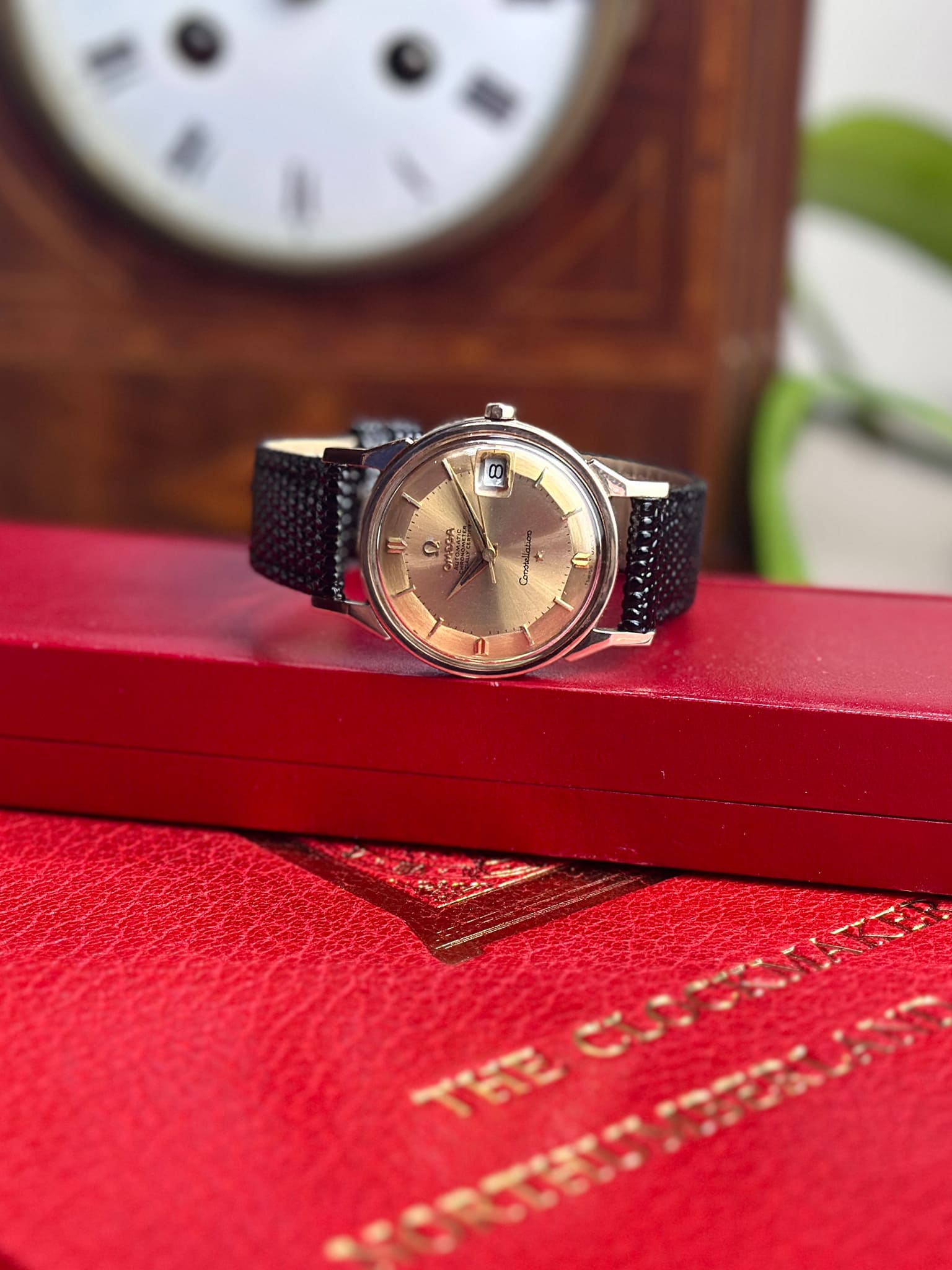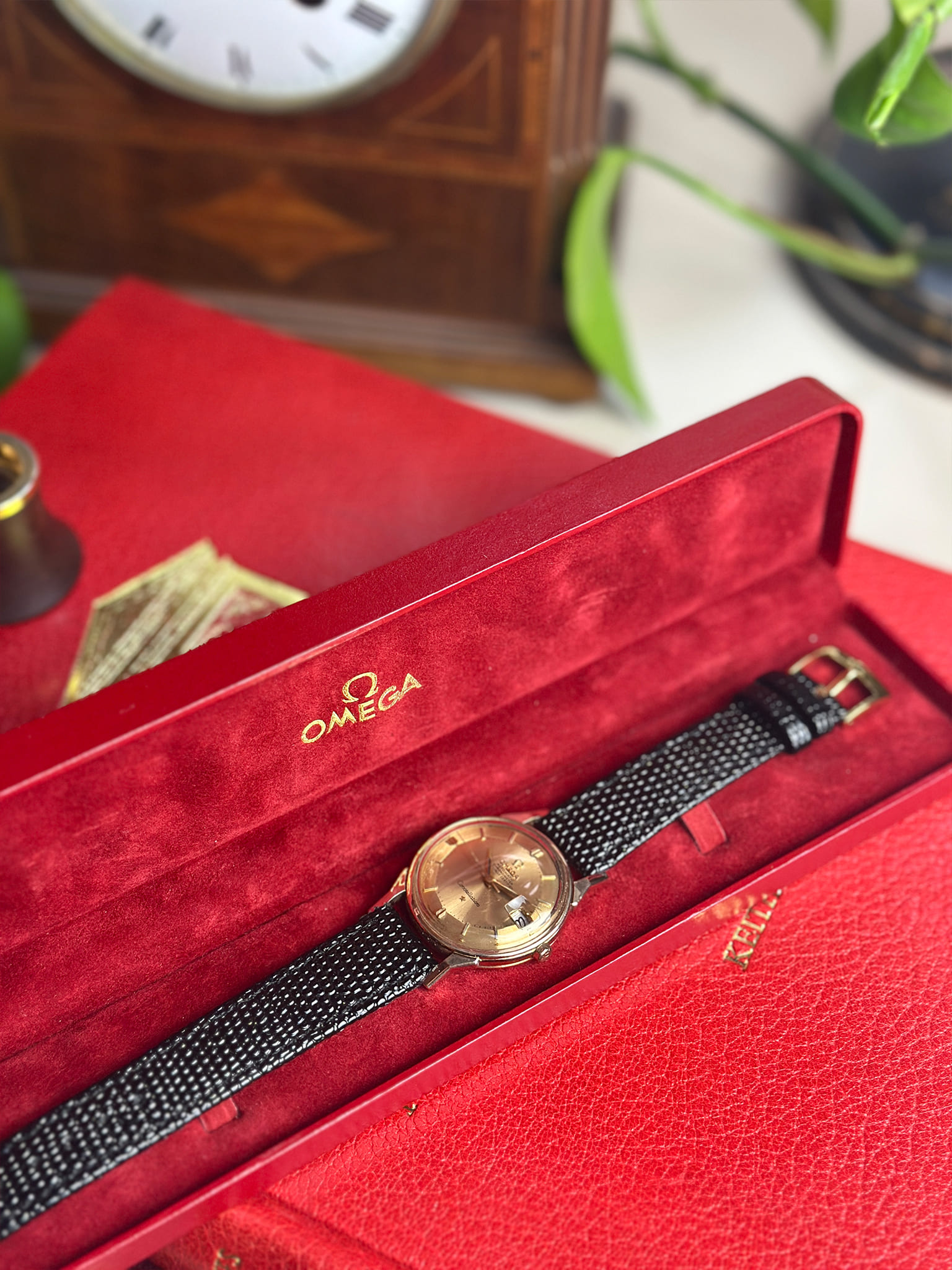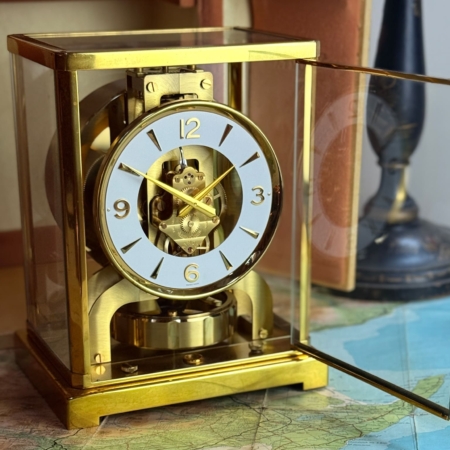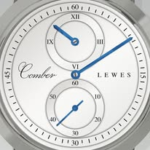- This item is no longer available and cannot be added to the cart.
1972 Omega Constellation Dog-Leg – 18ct Rose Gold
£3,950.00 Original price was: £3,950.00.£0.00Current price is: £0.00.
The 1972 Omega Constellation in 18ct rose gold, with its distinctive “dog-leg” lugs, belongs to one of the most turbulent and transitional periods in Omega’s history. By 1972, Omega had drastically reduced mechanical chronometer submissions to the observatories—only around 800 watches were tested, of which an estimated 600 were quartz models, leaving just 200 mechanical pieces like this Constellation undergoing traditional precision trials. This sharp decline was stark when compared to 1971, where Omega submitted approximately 450,000 movements for testing. The shift reflects both the growing dominance of quartz technology and the economic pressures facing Swiss watchmakers during the early 1970s, when quartz accuracy began to overshadow mechanical chronometry as the benchmark of innovation.
During the 1960s and early 1970s, Omega was fiercely competing with Rolex in the pursuit of chronometric dominance, especially at the Geneva and Neuchâtel observatories. While Rolex emphasized production consistency and robustness, Omega focused heavily on chronometer accuracy, regularly submitting tens of thousands of movements for certification each year. By 1972, however, only a fraction of these watches were being submitted—and within that fraction, very few were crafted in precious metals. Rose gold was especially uncommon, reserved for Omega’s most exclusive and meticulously finished pieces. The fact that this 18ct rose gold Constellation was among the ~200 mechanical movements sent for testing that year indicates it was not only rare in material, but also represented the pinnacle of Omega’s mechanical quality—chosen for observatory submission during a time when the brand was refining its priorities and drastically scaling back its mechanical chronometry program.
This Constellation’s 18ct rose gold case and dog-leg lugs exemplify the refined mid-century design language that Omega was determined to preserve, even as the industry faced rapid technological upheaval. The early 1970s were particularly difficult for Omega, with declining mechanical watch production as resources were diverted toward quartz development, resulting in fewer high-grade mechanical Constellations being produced and tested. This watch, therefore, is not just a chronometer-certified piece of horological craftsmanship, but also a rare survivor of Omega’s efforts to maintain traditional excellence during a period when the brand—and the Swiss watch industry as a whole—was fighting for relevance and survival in the face of the quartz crisis.


















